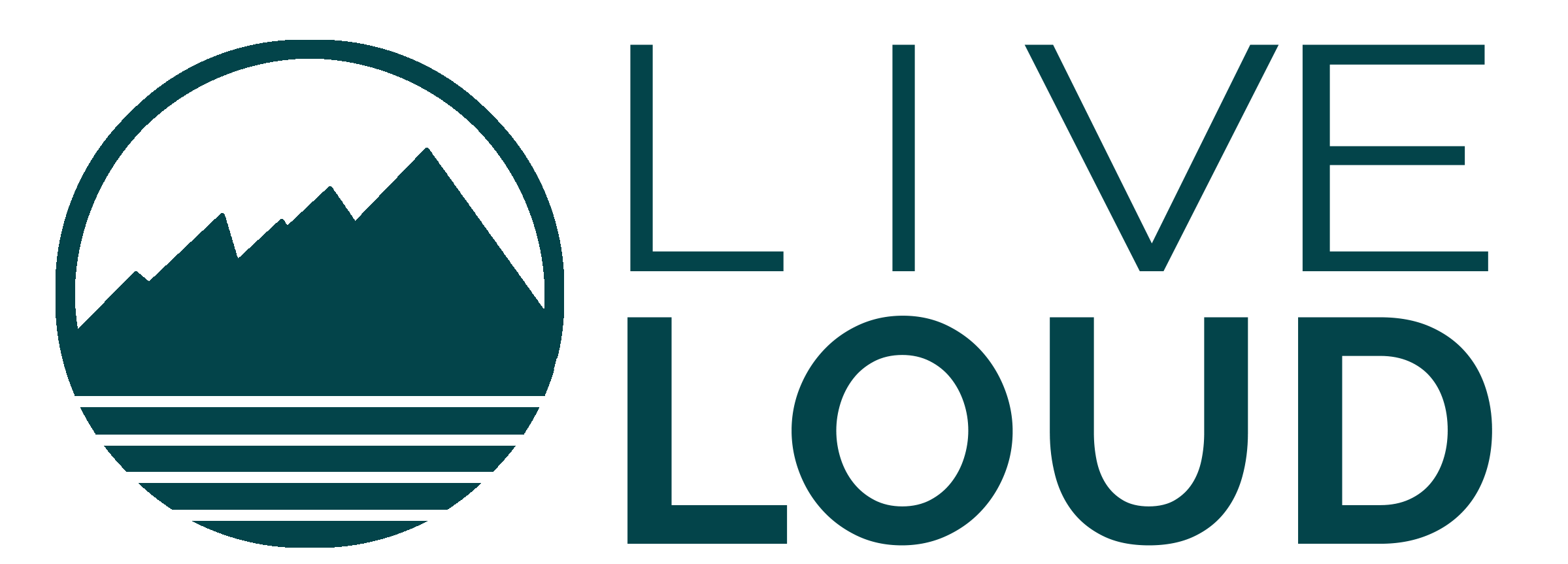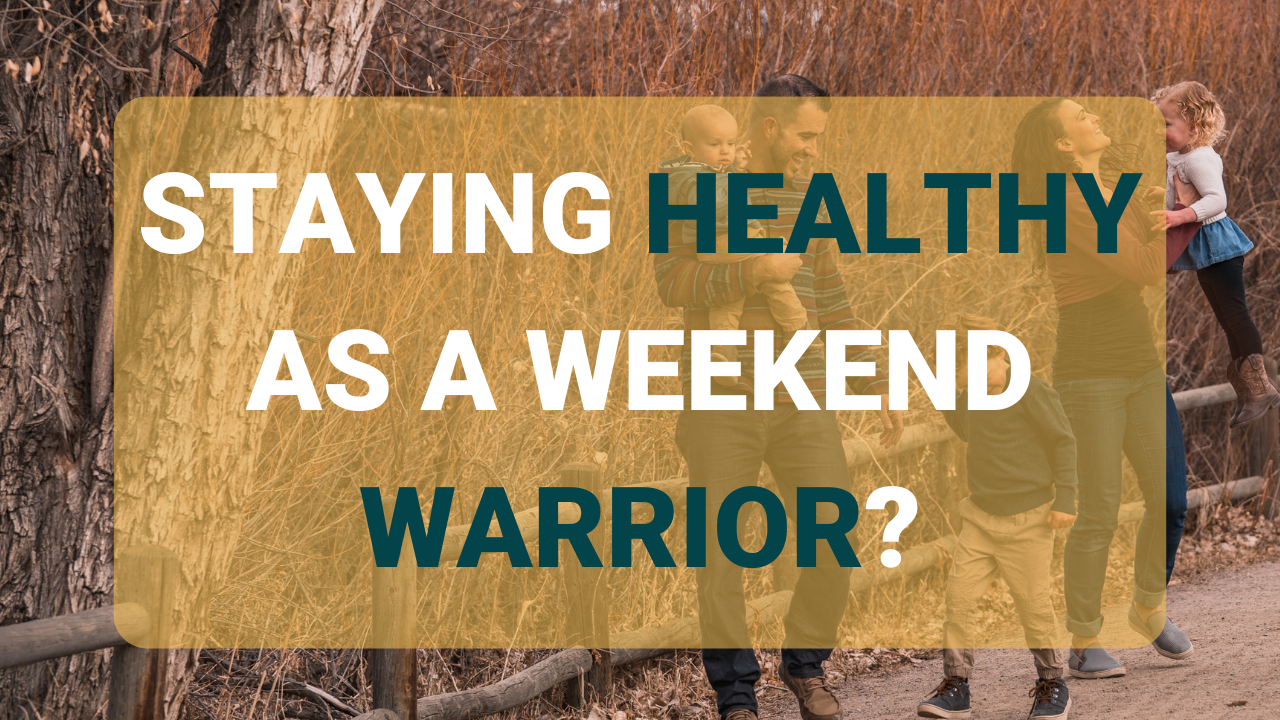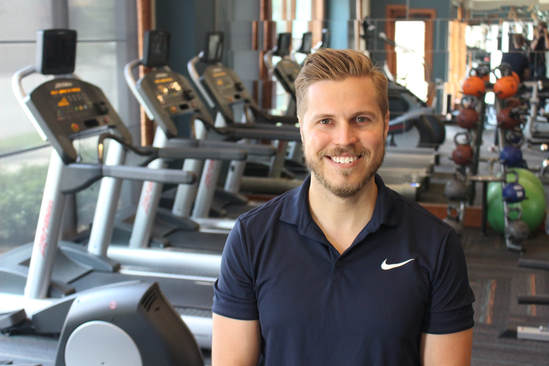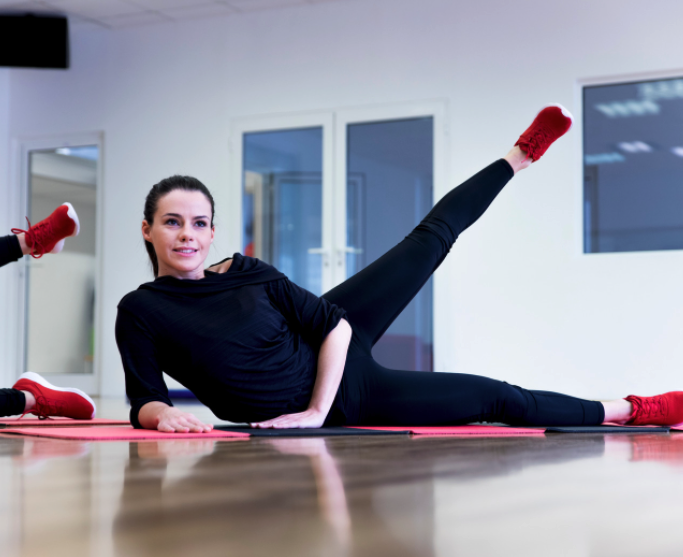Live LOUD Life PodcastLafayette Colorado
Episode 67
Implementing Corrective Exercises & Accessory Movements
With Dr. Antonio Gurule
Want to change up your exercise routine but don’t know where to start? Tune in as Dr. Antonio talks about body awareness and the importance of building up to new movements for rehab and strength.
Episode Highlights
4:00 – Proprioceptive awareness
8:00 – Example of hypermobility
12:00 – The importance of building up to progressive movements
20:00 – Example of corrective movements
24:00 – The importance of “shocking the system” and mixing it up for your body
About Dr. Antonio Gurule
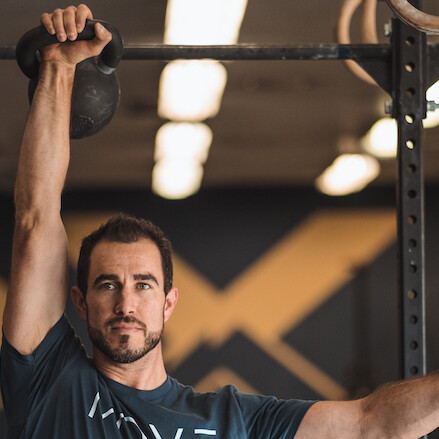
Background:
- Father
- Doctor of Chiropractic
- Owner of Live LOUD
- Personal Trainer & Health Coach
Check Out Some of Our Other Blog Posts and Podcast Episodes
Anthony Gurule 00:00
Hey what’s up guys, welcome back to another episode of the Live Loud Life Podcast. I’m Antonio, I’m your host of the Live Loud Life podcast. Today we’re going to be talking about some training principles here. And we’re just gonna dive right into it, we don’t have a lot of housekeeping or anything like that.
Anthony Gurule 00:26
Oh, just a small note, has nothing to do with training. But we do have a short mini course out for those of you who are pregnant right now, or if your partner’s pregnant, we have a little mini course on teaching you how to not suck at giving your pregnant partner a massage. We believe heavily on being able to offer some body work at home, to help with the aches and pains that your partner might be having. But not only that, like it really helps you guys increase your relationship and your bond during this time, which sometimes things can feel a little weird or a little odd being pregnant. But not only that, it helps with the birth preparation process. So having additional hands on care in between our sessions, or if you’re not even seeing a chiropractor and acupuncturist or prenatal massage, having that hands on care really helps with the the preparation of labor and delivery. So if you are interested in that, if you’re pregnant now and you want your partner to not suck, you can get this for them and say, “Hey, watch this, it’ll literally tell you what to do.”
Anthony Gurule 01:30
If you want to be proactive and your partner is pregnant, you want to be able to facilitate and help out with that, then that’d be awesome thing for you to just get on your own and follow through. It’s short, it’s a two hour course we go through some anatomical landmarks that teach you, you know where to press how to press what to do, you know how to be safe and effective, so on and so forth. So if you’re curious about that, we’ll throw a link in the show notes for that. And we will also be will also put it up on our website, which is liveloudlife.com. And we have it spread across all of our social media accounts as well. We’re most active on Instagram, handle is @live.loud.life. And then obviously on Facebook, you can find us pretty easily as well.
Anthony Gurule 02:11
But today, what we’re gonna be talking about is accessory exercise. And so oftentimes, we get into this some referred to as like the rehab purgatory, or corrective exercise purgatory, so on and so forth. Meaning we over emphasize the importance of needing to be able to do basic things before you can do complex things now, in theory, and just from surface face value, that makes sense, right? That makes sense, we need to be able to handle a lighter load before heavier load or simple things before more complex things. But what we wanted to walk through today is, you know, how do you apply these accessory exercises, corrective exercises, and when should you be advancing these, and when should you be continuously, including them and kind of just more like the philosophical foundation as to like why we do a lot of these things.
Anthony Gurule 03:15
Now. As always, context is most important, right? When you’re talking about these exercises, being able to apply them at the right time, in the right place, with the right load, with the right intensity is what makes things really hard, right. And for many coaches or, or rehab professionals, that’s kind of the art behind it, of understanding the individual and where they’re at, so on and so forth. And so when you’re talking about applying it to yourself, it gets a little bit more not confusing, per se, but just a little bit more difficult, not having someone to kind of like have that external view of knowing what might be best for you. But as you start to learn your body more and more, you’ll start to understand where your deficits are and where your strengths are, and where we need to spend a little bit more time attention. But what we’re trying to provide here, if you will, is in giving these corrective exercises or these accessory movements.
Anthony Gurule 04:11
Often times we’re trying to enhance and improve the proprioceptive awareness that we have for our body. Now what is proprioception? Proprioception is essentially your body’s understanding of where it is in time and place. So for instance, right now, I, my body understands that I’m sitting on a bench. And right now I’m trying to be mindful of my posture. Not only because it’s a little bit more comfortable, but it also looks a little bit more pleasant than me just slumping in front of a microphone, right? So my body has this awareness of like kind of how I feel and what my posture and position is.
Anthony Gurule 04:51
Another example would be my shoulders down by my side, my shoulders up above overhead. Now, because I’ve done a good amount of shoulder rehab and strength, and, you know, focus and intention, I know that my range of motion outside of me hitting these massive earphones is pretty much at full flexion or AB duction where my biceps are pretty much at my ear. For a lot of us who don’t do that a lot, when we go through these range of motion exercises, and I say lift your hands up overhead, and they get to here. And you know, I might ask like, Hey, do you feel like your arms are reaching towards the ceiling, or as far up as they can? Or at full range of motion? You know, whatever the question might be. And they’ll say, Yeah, and I’m like, well, you’re actually only at about 100, and maybe 50 or 160 degrees, we want to be at 180. And so you show him that difference of 30 degrees of what they thought they actually had. And they they get very perplexed, you’re confused, because Oh, my gosh, I thought I thought my arm was straight up overhead, right?
Anthony Gurule 05:43
So we see that there’s a lack of understanding and proprioceptive awareness about their shoulder complex, at least in that context of moving the arm up overhead. So that’s, that’s just an example. Now, other ways we could think of proprioception is like a balancing exercise, right? doing like a single leg balance, we’ve taken off a point of contact. So now it’s more challenging for your body to balance on a stable surface, such as the ground, which is one foot, so your body’s proprioceptive awareness feels itself tipping forward, backwards, and side to side. And it’s making these micro adjustments and corrections, to keep you balanced.
Anthony Gurule 06:23
Now, this is a really important concept, because oftentimes, these corrective exercises and accessory movements fall into this category, not just balance in general, but the greater concept of proprioception of how to fine tune our motor control to elicit the output that we want, right, because when we’re talking about fitness, or exercise, or working out or training room and sport, you are intentionally trying to do something, you’re intentionally trying to create a movement, you’re intentionally trying to push, pull, squat, you know, whatever as an outcome, right. So there is a motor control component to this. And the way in which we do that (control being the key word here) dictates efficiency, dictates strength, dictates power, dictates elegance, poise, whatever that might be, if you’re talking to you about something like dancing, right. And so the more repetitions you do, obviously, your ability to fine tune that motor control enhances. Now, if we’re at a deficit for whatever reason, let’s say easist example that you had an injury, right? The motor control component of that region in could, even globally, diminishes slightly, because you now have a broken kind of link in the chain, if you will. So when we’re talking about gross motor movement, gross, meaning like full body movements, and this goes beyond the thing that I get oftentimes irritated because it’s overused, it does make sense, but it is overused in the context of it is, everything’s connected to everything right, like, if your pinky toe’s broken, it’s going to affect the way that your left shoulder moves or something like that, you can make a strong argument for that.
Anthony Gurule 08:19
But what we what we mean realistically, though, is just like our body feeds off of other regions, right, so an example would be, if I’m going to kick a soccer ball, I’m running. So both feet are running so you know, classic movement that everyone does. But as I come to approach the ball based on the target, so now I have visual acuity problems here, like I have to fine tune and focus on something. So I now have to look at the ball and look at my target. And I have to know where the ball is while the ball is moving. And I have to be able to place my foot in the position that I wanted to hit based on where I want it to go against the target all of while, I have to be able to plant the opposite foot in a position that allows me to be stabilized so that I can torque about my stance leg, my hip, and then my torso pivots around. So you can see there’s a lot of moving parts when you’re talking about these kind of complex movements.
Anthony Gurule 09:17
And if I had an ankle sprain on either side, more importantly, if it was on my plant side, which is where I’m going to be absorbing all of my force, as I’m decelerating from running. That’s going to affect how all of this stuff comes into play. So when you have an injury, or we revert back oftentimes to these quote unquote, corrective exercises or accessory movements, to regain what was lost as a result of the injury. Now, it doesn’t always have to be an injury. It could be compliancy, right? I go through based on the season of life, I do a lot of the same things over and over because it’s effective for what I need right now. There’s a lot of holes in gaps within that, because I don’t do a lot of extra accessory correctives, I kind of do, you know, main compound lifts to suffice for what I need right now based on time, you know, goals on and so forth, or maintenance. And now, when, because of that compliancy of doing the same thing over and over, which is not wrong, right, there’s no wrong or right here, I will develop tightness in certain areas, because I may be sitting down filming more content or editing content, I might develop, you know, hyper mobility in some areas, because I’m doing the same thing over and over. And I get compliant with the movement and not having as much intention into it. This is just, you know, kind of rough examples, if you will. And so we see, oftentimes, we get this like creep of situations coming in, whether it’s hypermobility, or tightness or something like that. And thus, then we need to address those.
Anthony Gurule 10:59
So oftentimes, that’s what we see in our office. And oftentimes, because these aren’t really like overuse injuries, although they can be, we see someone come into our office with these like kind of dull aches and pains, it’s nothing really significant, that would elicit like, hey, we have significant tissue damage or an injury. But because of the compliance of what we’ve been doing, more times than not really, it’s tension, we’ve developed tension in certain areas, and then that tension affects how we’re able to move with the activities that we like to do. Thus, we create altered movement patterns that allow us to still achieve the task. But now we’re kind of taking shortcuts, whereas what we were able to do is very efficient, and very congruent with how maybe that movement should have been done. And now taking that shortcut, we’re trying to just work around the stiffness rather than dealing with it. And now we’re creating potentially even more issues down the road. So you got to kind of really re scrape everything down, and kind of build that back up.
Anthony Gurule 11:57
So that’s where these accessories or corrective exercises can come back into play. But what happens is, we oftentimes focus on the need to be correct in order for you to then progress to the next level. And in my mind, while that is true and beneficial, we do need to go to that next level, I think sooner than we think, to give the body context of to why the corrective, or the exercise, or the accessories are important and how it’s how it’s building that path or that step stone to the thing that you actually want to do. And so very often, and that’s where we look at progressions and regressions within, you know, movement patterns. So, you know, as an example, we could say, Hey, someone wanted to get back to, you know, Olympic lifting and doing like a barbell snatch, well, there’s an overhead squat component, there’s obviously an element of being able to be stable with your arm overhead, while you’re descending into overhead squat, which means that barbell is going to be shifting and your center mass is gonna be changing. So obviously, there’s a lot of complex things in that. And if you’ve suffered a shoulder injury, and that’s what you want to get back to, we have to find some ways in which the corrective exercises are going to help build you up to that. So, you know, it might not be overhead snatching right away, but a landmine press might feel fantastic and not elicit any pain. And that is similar to us being able to have a locked out overhead shoulder position, and I can transition my body into in a way in which I my arm feels like it’s more overhead, creating that compressive stability through the shoulder, and we can add that with, you know, a half lunge position or something like that. So it’s not the same, right? It’s not the same, but this can be considered an accessory or a corrective exercise leading up then to overhead squats and snatches and things like that, right. So the the nomenclature of accessories and corrective exercises doesn’t simply just mean, you know, foam rolling or, you know, isolated banded exercises or things like that, while that is a component of it and good, those could almost be more considered as like, warm up exercises where we’re priming the nervous system, we’re releasing tension within certain areas so that the joints can move to the range of motion that we want to then perform the exercises that we need. Right. So and I don’t want people to get caught up in the you know, this, the semantics of like, what we’re trying to name these things, right, because I think that gets confusing.
Anthony Gurule 14:42
What I want you to moreso focus on is what were the real deficits that you that you need, and can we build right like a ladder or stepping stones to help you rebuild from that. And it is a constant game of going up and down. I use the concept is like the game Chutes and Ladders, commonly you’re going to climb up and then you’re going to come down, because you’re always trying to find out, like where that next threshold is of being able of your capabilities. And when you when you’re knocking on that door, there’s gonna be a few times where you backslide a little bit, and you’ll get a little bit of aches and pains or, or, you know, whatever that is, and, and that’s okay, because then you know, okay, well, that path got me there fairly quickly. So I can recreate that path. Again, go back to the corrective exercises, the lifting patterns, the intensity, the sets and reps, things that I did. And then you just need a micro adjust whatever possibly causes you go down. And that could just be simply recovery or something like that, doesn’t mean you did necessarily anything wrong from a lifting or training perspective, might just been a recovery perspective.
Anthony Gurule 15:45
But I think adding these accessories and corrective exercises consistently throughout is beneficial, because the compliance factor that we had indicated before, and all of this, again, comes back down to goals, right? What are the goals that you want to be able to do? What are the pain points that you actually have, and if there’s things that are limiting you from being able to progress to those goals, and so on, and so forth, then yeah, those are the things you need to address.
Anthony Gurule 16:13
But from a timing perspective, you know, corrective exercises might be the thing that you need to focus on the most. Right, when you’re dealing with a certain season of life, in a certain area, and you’re having more pain or discomfort, or whatever that is, but yet you need quote, unquote, you need to train, and we hear this a lot, which is, which is there’s nothing wrong with it. Like, for my mental sanity, I need to go train. That is great. But we have to also, you know, take into consideration what training really is, right. training from a, from a global scheme involves a lot of things, it’s not just, you know, rubber hitting the road and pounding it, right, that is an element. And it’s great to do intense workouts and push yourself to the edge. But there might be a time and a place where you need to focus a little bit more on the collective and the accessories to help clean up some of the gaps or the limitations or some of the sticky spots, that’s then not allowing your rubber to the road training to be as effective. Right?
Anthony Gurule 17:20
And what is it going to be? Well, I mean, you could go on Google or YouTube and type in “accessory exercises for the shoulder” or “corrective exercises for the back of the hip, and you will get bombarded with a ton of exercises and information. That might be an awesome place to start. I mean, we post that same content on YouTube, to hopefully help someone find a little piece of nugget of information out there that could make all the difference wonderful, saves you a ton of time, money from going in. But that might not always be the case, right? Like we throw that out there just like hey, you know, this is something to try. But if you’re really, at this breakpoint, have mentally struggling with what to do or anything like that, it really helps having someone just go through an evaluation and realistically the the cost and the time that it takes to get that pinpoint evaluation, and then the exact information that you need to make the change really saves you a lot of time and money in the end as well. So you know, it really just kind of depends on the person like I am, I am guilty to a fault of being a DIY er and trying to tell I just run my head into a wall. And then I’m like, Okay, I can’t do it, I need to reach out to professional, right. Nothing wrong with that. And if you want to try that with your body, I love that like exploring, and trying to figure it out that again, comes back to the whole concept of proprioception, and awareness, the more you can explore your own body’s range of motion, strength capabilities, proprioceptive, balance, you know, all those things, the more input you’re going to have, and the more general awareness you’re going to have. So that when something is awry, you know, well, I can fix this or I can’t fix this or I know what to at least try and know, like kind of what avenue to at least go down so that when you then hit up a professional if you need it, you can say Hey, this is what’s going on. And I know what’s going on because of this, this, this and this and like that makes my life awesome. That makes my life so much easier, and that’s awesome, I get a sweet, I see where you’re at. Let me see if there’s anything else that you might have missed from just like, you know, because I can do more motion palpation and trying to figure out like specific joint range of motion limitation, so on and so forth if you’re in the office, and then we just kind of combine all that information together. But I’m a huge fan of that. And that’s that’s, you know, half the reason why we’re having this exact same conversation again, coming back to the awareness, the proprioception model, and using correctives or accessories to help facilitate that.
Anthony Gurule 19:52
now, again, very broad examples, but let’s use some examples here of or philosophy principles or philosophies, zero, but let’s use some specific examples to see if that helps kind of clear things up. So the shoulder, right, one of the more obviously, complex joints out there. So what would some accessory or corrections look like? Well, traditionally, we see, and this gets demonized, so I apologize, because I’m going to then kind of do that again. But banded exercises where we’re simply just doing like external rotation with a band pulling like this internal rotation point like this. And then it might be there, those are really good actually. Right, they can be fantastic for priming, the nervous system that’s activating the rotator cuff.
Anthony Gurule 20:41
It creates torsion and some compressive load, depending on the angle, and distractive load in the shoulder complex, which can help build up the resiliency of the tendons in the connective tissue, which again, fantastic, but it cannot be like the only thing, it needs to be expanded upon. So for instance, we can take that same concept, and crossover cemetery, or just wall mounted bands, or cable machines are great, because now I can do more complex movements where I might be doing like a face pull. So I’m grabbing cables that might be crossed, and I’m going to pull them up kind of towards my face. So I’m creating external rotation as I’m coming into AB duction and a little bit of flexion on my shoulder. So that’s a really good way to take that same concept and then add on to another level.
Anthony Gurule 21:28
Now going above and beyond that is how do we again, continue to strengthen the rotator cuff? Well, the rotator cuff is expanded upon and strengthened through compressive and distractive load. So we can then take that same concept and then maybe add it to like a TRX, where I’m using my body weight, and that body weight is trying to traction my arm. So I’m strengthening the rotator cuff through that. And I can do a face pole there. So I’m taking a higher load from the cables or the bands, and doing it more complex because now I’m adding a dynamic plank as I’m holding my body, you know, still, and I’m pulling that up through from their compressive loads, right? Why don’t need to go through an external rotation per se, but I can then add a crawling movement where I’m going through translation as I’m crawling against the ground, and I’m going to be having a compressive force. And as I’m crawling one hand has to go through kind of flexion and AB duction as I go above my head. And then it’s going to pull down using a little bit more lats than the upper back per se. But it’s going to be activating the rotator cuff to maintain good shoulder centration as I translate and pivot over my body over my shoulder, right? So it’s a completely different type of movement. Now this would all be indicative of like, well, what would I need something like this for? Well, it would depend very much on the sport. These are very common things that we do for bootcamp goers, CrossFitters, so on and so forth. Even just weekend warriors, as you’re talking about activities that you might be doing outdoors, right, like rock climbing, or mountain biking or anything like that. These are great just proprioceptive movements that can be used as accessories and/or correctives to enhance your awareness and capabilities around the shoulders, then of course, we would want to strengthen the shoulders through you know, push ups or TRX rows or pull ups or military press so on and so forth. But we sprinkled some of these in, to make it challenging, but to again, just put your body in a position in which it does not have a choice but to get that information and enhance upon it proprioception and again, awareness coming back to that same thing. So oftentimes, when we’re programming or giving these, they’re kind of just sometimes they seem silly, but they’re sometimes they’re just fun. But again, they’re they’re intended to be kind of challenging and novel, because that’s where you’re going to be getting new information. that compliancy coming back to that when you do the same thing over that information comes back to your head. And your body’s like, oh, yeah, I’ve seen that before. This is all good. I know what to do. Which is great. Because when you get to that subconscious level, when you’re looking at like the learning model, you don’t know what you don’t know, you now know that you don’t know you’re making intentional decisions to change that. And then it becomes subconscious, where you the changes that you were trying to elicit now are just done automatically.
Anthony Gurule 24:08
So yeah, there’s a certain element of skill and knowledge that you’ve just done it so many times. But it’s good to change the system, right? It’s good to shock the system and just give it a little bit of novel information, so that it becomes new, and then your body actually has to pay attention and process it. And that’s really what we’re looking at and what we’re trying to do. So if you’re adding corrective exercises or accessories in this manner, that’s fantastic. Keep going mix it up.
Anthony Gurule 24:34
If you’re not, this episode is again more for you. I think it’s a great thing to add. And again, if you don’t know what to do, you can start with Google. You can start with YouTube, you can start with a consult with someone and they can give you better suited movements for you, your goals, aches and pains, so on and so forth. But again, as I say before, as I said before, we love encouraging the exploration model of trying to figure out how your body actually moves, so on and so forth, and then see where you get and then, you know, ask for a little bit help to go above and beyond that, if you will. So, I hope this was beneficial. It was a reminder to myself that I need to add more of these correctives. And just kind of, you know, get back to the exploration play model of figuring out my body and then still, you know, reverting back to the basics and the foundation, the bread and butter of compound lifts, squats, deadlifts, swings, cleans, military press, so on and so forth. Because those offers so much bang for your buck, that if you’re doing those, you have more time to then go through this exploration model where, whereas not, again, not wrong, you’re kind of classic bodybuilding, where you’re hitting certain regions of your body with a lot of different exercises throughout, that takes a lot more time. If that’s your goal, nothing wrong with that, you know, bulk up, that’s awesome. But if you’re someone who’s trying to, which again, is more so speaking to the population that we treat, family, kids, busy, if you’re trying to like kind of pack these things in, the compound lifts that we just described, you get a lot more out of those full body movements, and then you have a little bit more extra time to spend on the correctives and accessories if you will.
Anthony Gurule 26:15
So I hope this was beneficial. Please make sure to like subscribe and share if you’re diggin this. Make sure to follow us on social media as we indicated on Instagram, @live.loud.life. You check out our website as well where we have a lot of this content also in blog form, depending on how you just want to consume the information that’s gonna be helping you and that’s www.liveloudlife.com. no dots in between. Liveloudlife.com So thanks for tuning in, guys. We’ll see you next time.
–
